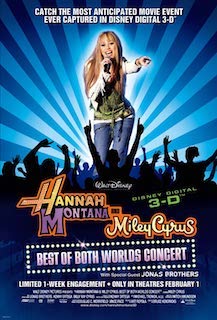 Today’s movie theatre operators are facing a dilemma: While they’ve made investments and improvements that were supposed to keep their theatres full, too many seats remain empty, and they don’t have endless resources to keep throwing at improving their experience. What’s the solution? In my opinion, operators don’t need to do things better. They need to do things differently. I firmly believe the movie theatre of the future will offer hyper-focused content and be experiential.
Today’s movie theatre operators are facing a dilemma: While they’ve made investments and improvements that were supposed to keep their theatres full, too many seats remain empty, and they don’t have endless resources to keep throwing at improving their experience. What’s the solution? In my opinion, operators don’t need to do things better. They need to do things differently. I firmly believe the movie theatre of the future will offer hyper-focused content and be experiential.
The reason I believe this is because I’ve been fortunate to have spent my career helping other industries transform their entertainment experiences—first in television, then concerts, film production and cruise lines. Looking to the future, I see the movie theatre industry as one of the next great opportunities for experiential transformation. But exhibitors will need to seize on the opportunity, starting now.
 Experiential transformations don’t happen overnight, and they don’t happen every day. They take time, commitment, investment, and mindset shifts.
Experiential transformations don’t happen overnight, and they don’t happen every day. They take time, commitment, investment, and mindset shifts.
I was commissioned by Disney as a live 3D technical consultant and helped the studio create the third highest-grossing concert film ever, Disney’s Hannah Montana & Miley Cyrus: Best of Both Worlds. Along with new revenue, our effort was hyper-focused on making millions of young fans and parents who couldn’t score tickets, feel like they were right there at the concert. When we filmed test footage at concert rehearsals, we noticed that it was difficult to keep James Cameron’s behemoth 3D cameras out of our shots. But rather than attempting to frame them out, we concluded that seeing 3D layers of cameras in the shots would actually make the movie into more of an inside fan experience. We threw out the rule that said you’re not supposed to show behind-the-scenes elements in a movie. That mindset shift was one of many creative choices that led Disney and movie theatres to see a record-breaking box office for a concert film.
 My point is, we specifically designed the content around the unique needs and wants of a fan base. If we apply this mindset when we think about developing alternative movie theatre content, it will lead to stronger connections between passionate consumers and theatres. Think about all of the different sports, music, pop-culture and genre fan bases in the world. Now imagine being able to offer more personalized content that fans can’t get anywhere else. The icing on the cake is hyper-targeted marketing.
My point is, we specifically designed the content around the unique needs and wants of a fan base. If we apply this mindset when we think about developing alternative movie theatre content, it will lead to stronger connections between passionate consumers and theatres. Think about all of the different sports, music, pop-culture and genre fan bases in the world. Now imagine being able to offer more personalized content that fans can’t get anywhere else. The icing on the cake is hyper-targeted marketing.
Movie theatres should start taking baby steps toward creating their own pre-show experiences. A personalized experience is essential and can potentially be lucrative when theatres grow super-fan audiences. For example, consider adding an Instagrammable screen in the lobby that is dedicated to letting fans hype tonight’s event on social media.
For the past 12 years, I have developed experiential multimedia content for each of Carnival Cruise Line’s new builds, including its newest, biggest ship, Mardi Gras. Where the entertainment was once confined to a stage, today’s modern cruise ships add multiple experiential layers to their featured entertainment extending into the audience and beyond. Audiences no longer step into a theatre to sit and wait for the show to start. They enter a world full of experiential layers – immersive lighting, multidimensional scenery, and interactive video – that captivates them throughout the whole experience. When executed well, this kind of experiential entertainment is proven to create emotional bonds, customer loyalty and repeat business.
Movie theatre operators should envision a future where the outside world ceases to exist the moment people step up to their doors. One where they make people feel as if they are not entering a movie theatre but are rather immersed in entirely new worlds of unique and memorable experiences to share with their friends and family.
Robb Wagner is an experiential artist and the CEO of Stimulated-Inc.
Stimulated-Inc. www.stimulated-inc.com
